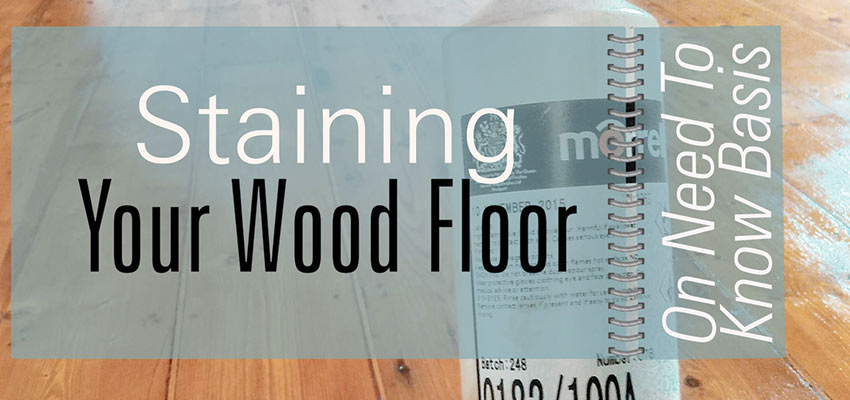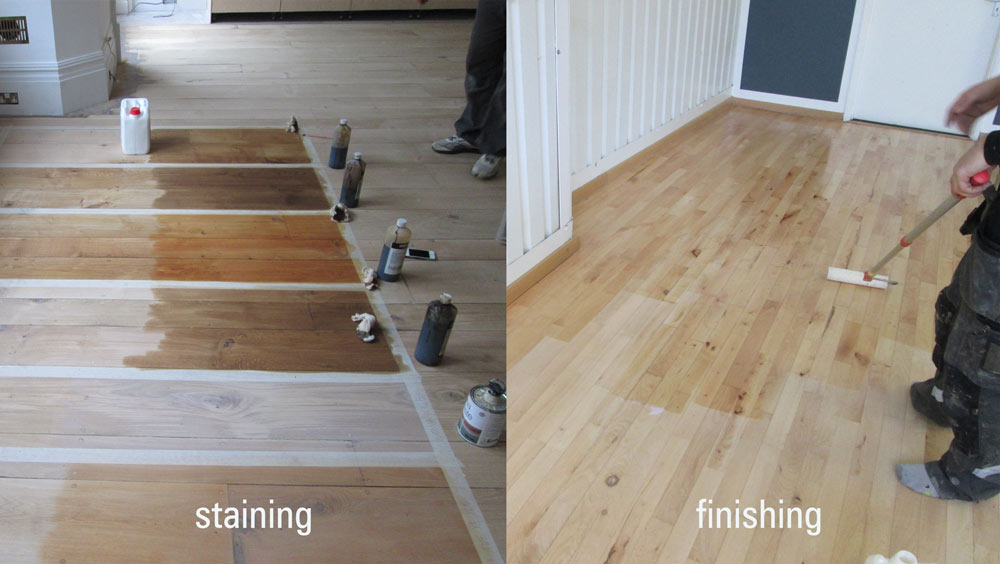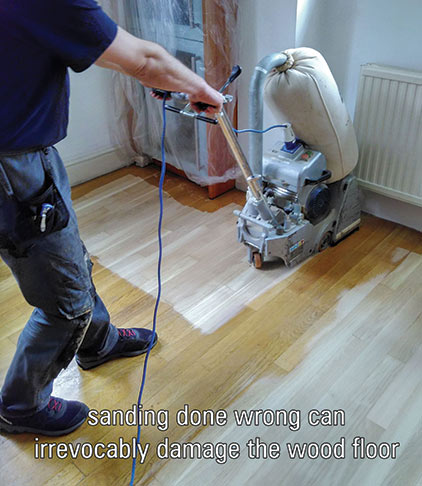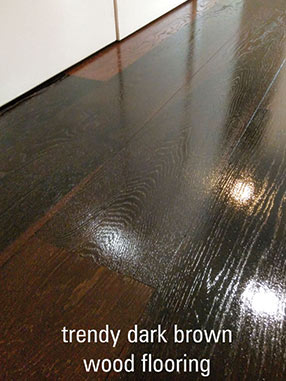Back to Flooring Products
Everything You Need to Know About Staining Wooden Floors

Many people often confuse the processes of wood floor staining and finishing. When seeking professional services, it’s important to understand the clear distinction between these two essential steps in wood floor restoration.
The primary purpose of a wood floor stain is to enhance and transform the colour of your floor, allowing you to achieve a custom aesthetic that matches your interior design. On the other hand, a finish is applied after staining to create a protective layer that shields your floors from scratches, moisture, and daily wear.
To successfully stain wood floors, it’s crucial to first sand away any existing finish and old stain. This ensures the new stain penetrates the wood evenly and delivers the desired colour transformation. Without this preparation, the stain will not adhere properly, resulting in uneven results.
Whether you're using a floorboard stain, wood floor dye, or a combination of floor stain and varnish, understanding these differences is key to achieving both the perfect look and lasting protection for your hardwood floors.

How Many Types of Wood Floor Staining Products Are There?
A wood floor stain is essentially a colourant suspended or dissolved in a solvent, used to alter and enhance the appearance of your flooring. When it comes to staining floorboards, there are two primary methods to achieve the desired colour: using dyes or pigments.
Types of Wood Floor Dyes
Dyes are translucent and allow the natural wood grain to shine through while enriching its colour. The main types of dyes include:
- Chemical Dyes – React chemically with the wood to alter its colour
- Nitro Stains – Solvent-based dyes known for vibrant results
- Water Dyes – Eco-friendly, easy-to-apply options with minimal odour
- Spirit Dyes – Alcohol-based dyes offering quick drying times
Types of Pigmented Wood Floor Stains
Pigments are tiny particles that deposit colour onto the wood’s surface, offering a more opaque finish. These are commonly available as:
- Water-Based Pigmented Stains
- Oil-Based Pigmented Stains
Most commercial wood floor stains primarily use pigments. However, there are also advanced products that combine dyes, pigments, and binders to achieve unique finishes, balancing transparency with richer colour saturation.
While the ability to stain wood floors offers exciting design possibilities, it’s essential to approach the process with care. Not all staining methods guarantee perfect results, so it’s crucial to consider your options and consult with professionals to ensure the best outcome for your floors.
Buy Floor Staining & Finishing Products
Nothing Remains Hidden with a Stain

Staining wooden floors is a fantastic way to revitalise and refresh their appearance, especially if you've grown tired of the same old look. However, before applying a wood floor stain, it is essential to ensure the floor has been properly sanded to achieve a smooth, flawless surface.
While DIY floor sanding might seem appealing, it often falls short of professional standards. Common mistakes include:
- Uneven sanding: Results in patchy stain absorption
- Damaging the wood grain: Can lead to visible scratches after staining
- Skipping grits: Prevents a smooth surface, causing imperfections to stand out
- Incorrect use of sanding equipment: Leads to gouges or swirl marks
Remember, staining wood floors enhances every detail — both the beautiful grain and any existing flaws. Imperfections that might have been hidden on a bare wood surface will become highly visible after staining.
That’s why investing in professional wood floor sanding services is crucial. A well-prepared surface ensures your floorboard stain delivers a stunning, even finish that truly brings out the beauty of your floors.
Not Every Type of Wood Is Suitable for Staining
Each wood species is unique, reacting differently to wood floor stains and producing varying aesthetic results. For example, if you’re aiming for a trendy grey finish, white oak is an excellent choice due to its neutral undertones. In contrast, red oak has a natural reddish hue, requiring a darker grey stain to achieve the desired look.
Some wood types are more challenging to stain evenly because of their tight grain structure. These include:
- Maple
- Pine
- Ash
- Cherry
- Birch
When staining floorboards made from these species, stains may absorb unevenly, resulting in a blotchy appearance. To prevent this, it's recommended to use a stain controller (also known as a wood conditioner). This product helps fill the wood’s pores, ensuring a more uniform stain absorption and a polished, professional finish.
By understanding how different wood types interact with stains, you can make informed decisions that lead to stunning results. For complex projects, consider consulting with our floor staining experts to achieve the best outcome.
This is Not the Colour I Wanted

It's not uncommon for homeowners to feel disappointed when the final result of their wood floor staining project doesn't match the colour sample they selected. But why does this happen? Manufacturer-provided floor stain samples are meant as general guides, yet several factors influence how the stain will look on your actual floor.
Key factors affecting stain appearance include:
- Existing wood species and grain pattern
- Lighting conditions in the room
- Wall colours and surrounding decor
- Previous treatments on the floor surface
Staining wood floors requires a specialised skill known as colour matching, which involves adjusting stains to achieve a precise hue that complements your space. This complex process is one of the most challenging aspects of the flooring industry and is best handled by professionals.
To avoid costly mistakes and disappointment, we highly recommend consulting with floor staining experts who can ensure the results align with your expectations.
Careful What You Wish For!
Before choosing a wood floor stain, it's essential to understand both the advantages and drawbacks of different colours. Darker shades, such as deep brown and ebony, have become increasingly popular for their bold, stylish appeal. They create a striking visual impact and can serve as a stunning focal point in any room.
However, darker stains come with specific challenges:
- Scratches become highly visible when they penetrate the finish, exposing the lighter wood beneath
- Dust, dirt, and footprints are more noticeable on dark floors
- Require more frequent cleaning and maintenance to keep looking pristine
Choosing the right stain involves balancing your desired aesthetic with practical considerations. Whether opting for a dark, dramatic tone or a lighter, more forgiving finish, it's crucial to weigh these factors carefully to ensure long-term satisfaction with your wood floor dye.
For personalised advice and flawless results, don’t hesitate to reach out to our wood floor restoration team.
Frequently Asked Questions About Wood Floor Staining
Can you stain any type of wood floor?
Not all wood species are equally suitable for staining. While white oak takes stains evenly and produces excellent results, woods like maple, pine, ash, cherry, and birch can be challenging due to their tight grain structure. For these species, using a stain controller can help achieve a more uniform look. When in doubt, it's best to consult with our floor staining specialists for expert advice.
What's the difference between wood floor stain and dye?
A wood floor stain typically contains pigments that sit on the surface, providing a more opaque colour effect. In contrast, a wood floor dye penetrates deeper into the wood, offering a translucent colour enhancement that allows the natural grain to show through. Some products combine both for unique results. For a detailed comparison of different wood floor finishes, including stains, dyes, oils, and lacquers, check out our comprehensive guide.
How long does wood floor staining last?
The longevity of a wood floor stain depends on the quality of the staining product, the type of finish applied on top, and how well the floor is maintained. With proper sanding, sealing, and regular maintenance, a well-applied stain can retain its appearance for many years. However, areas with heavy foot traffic may require touch-ups or refinishing sooner.